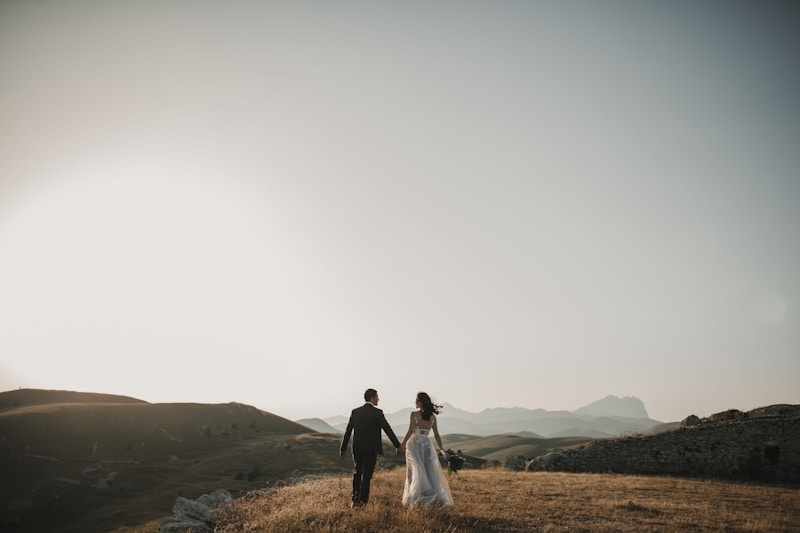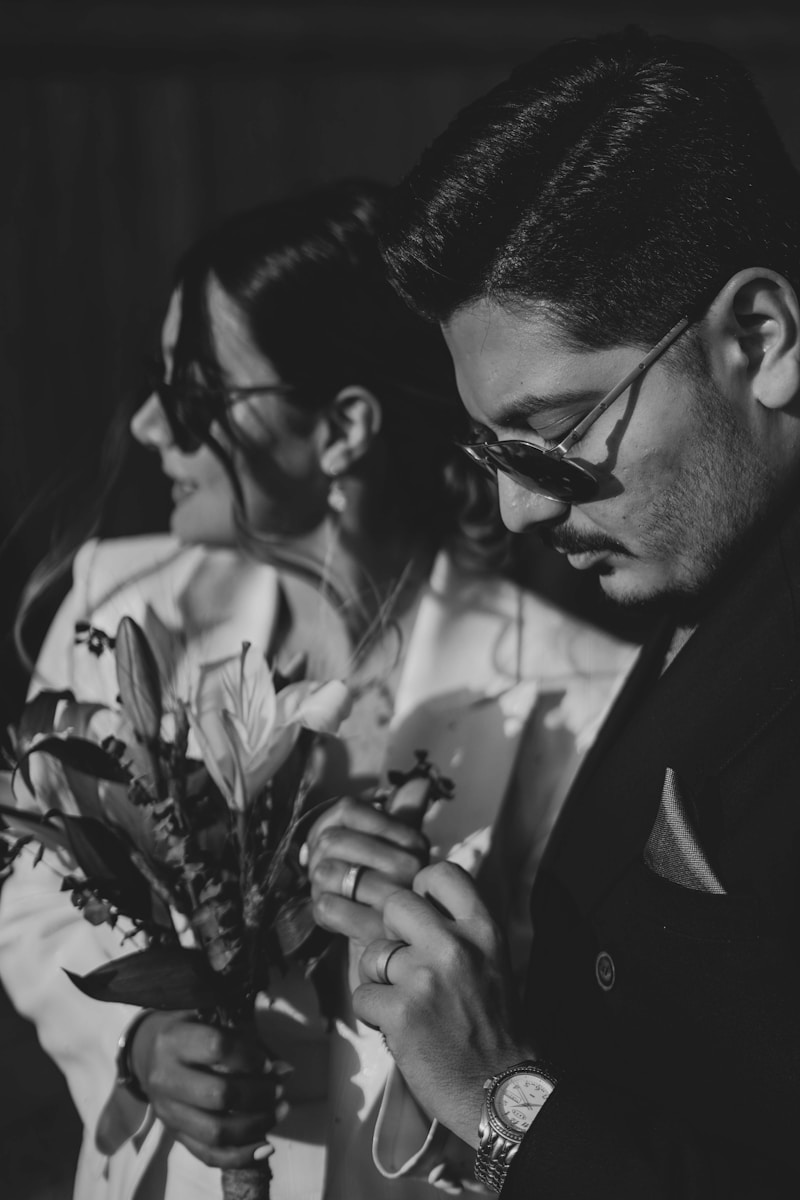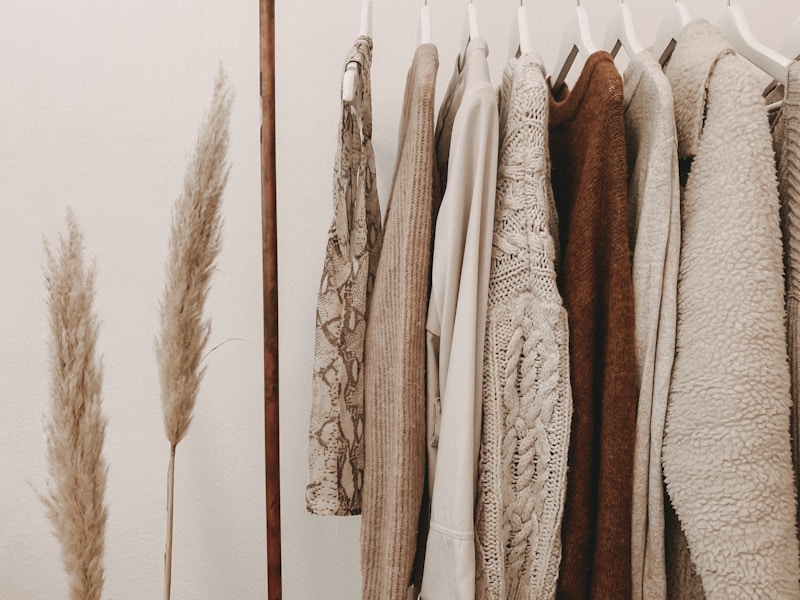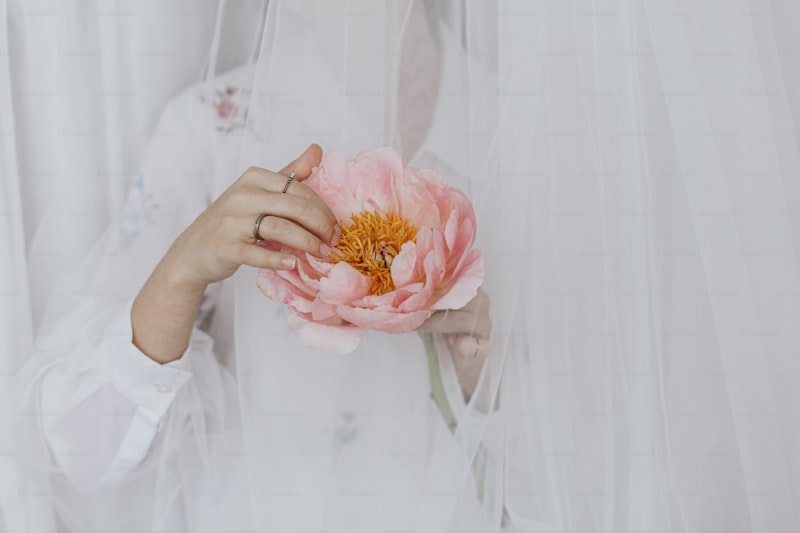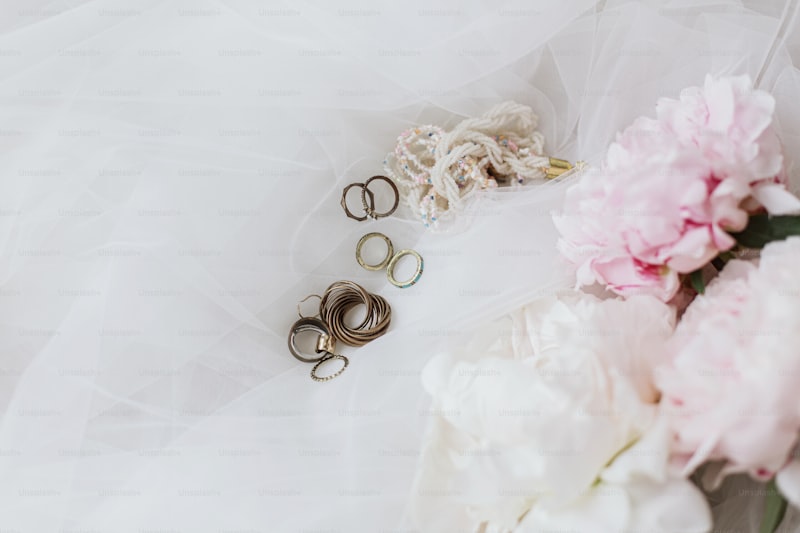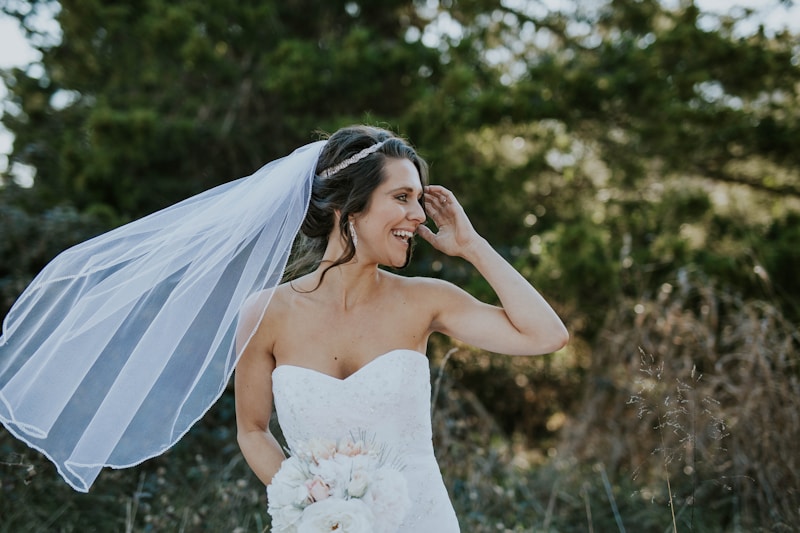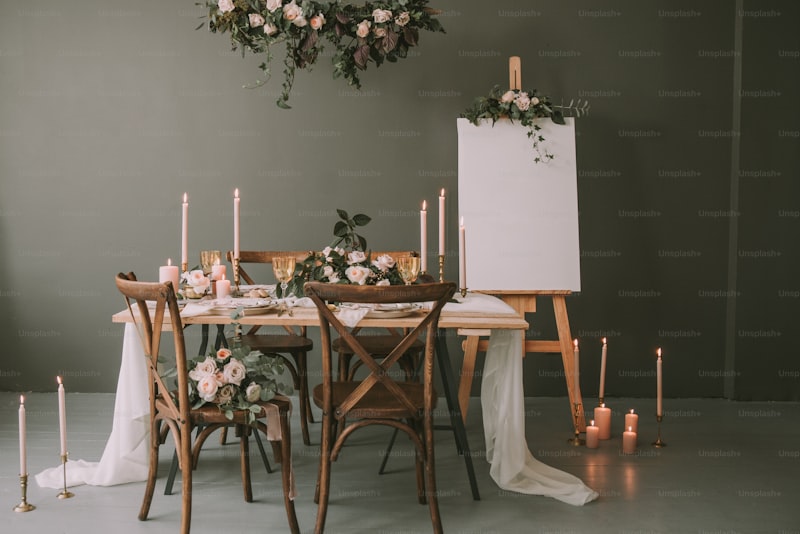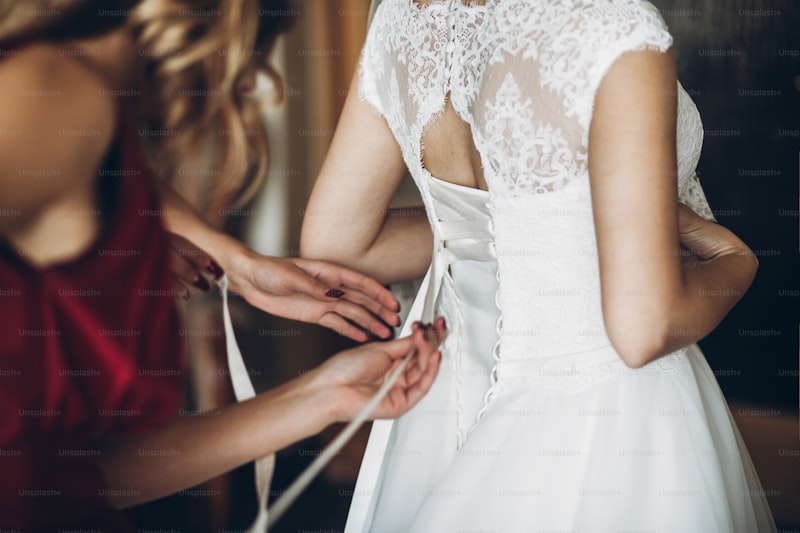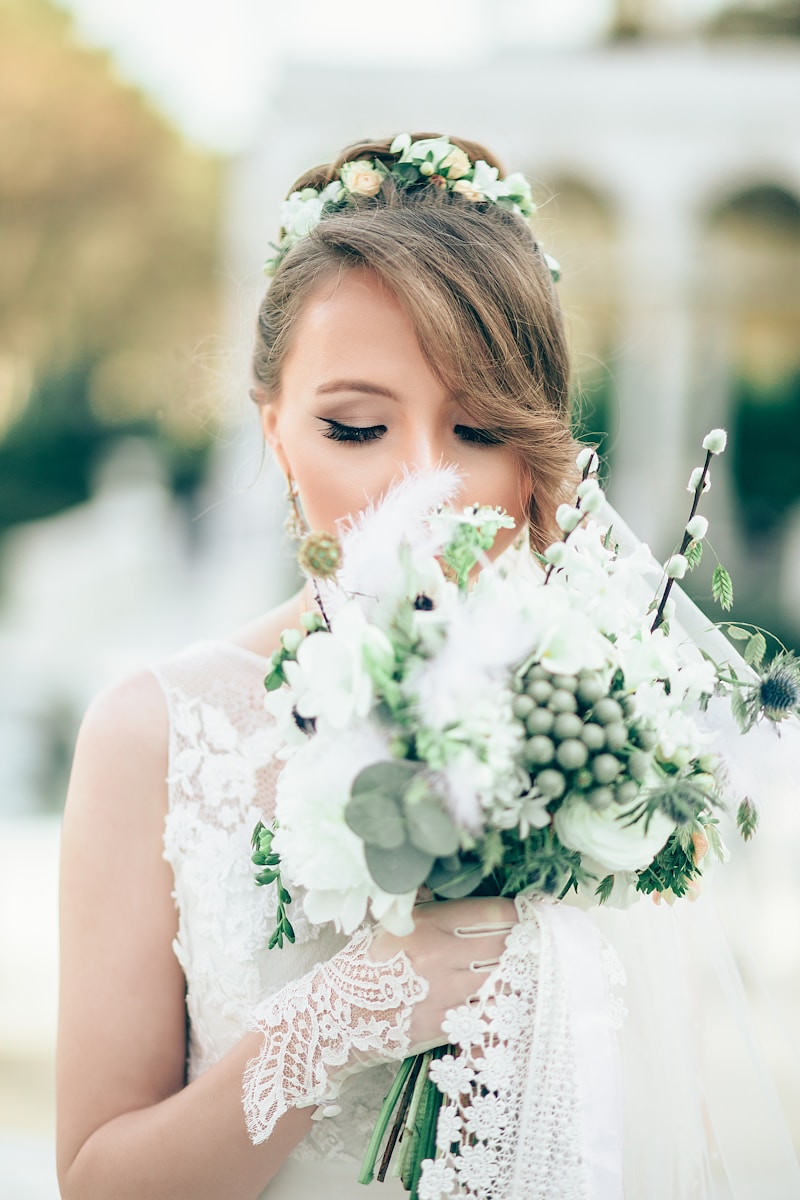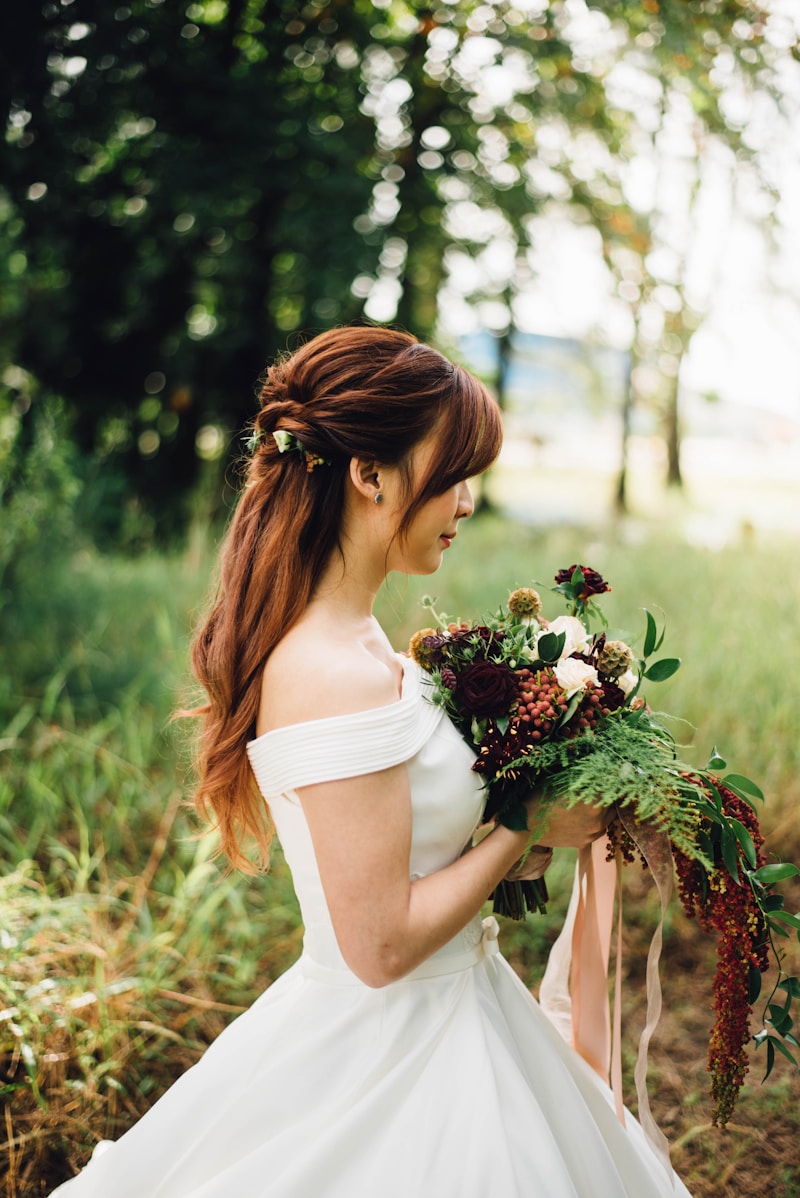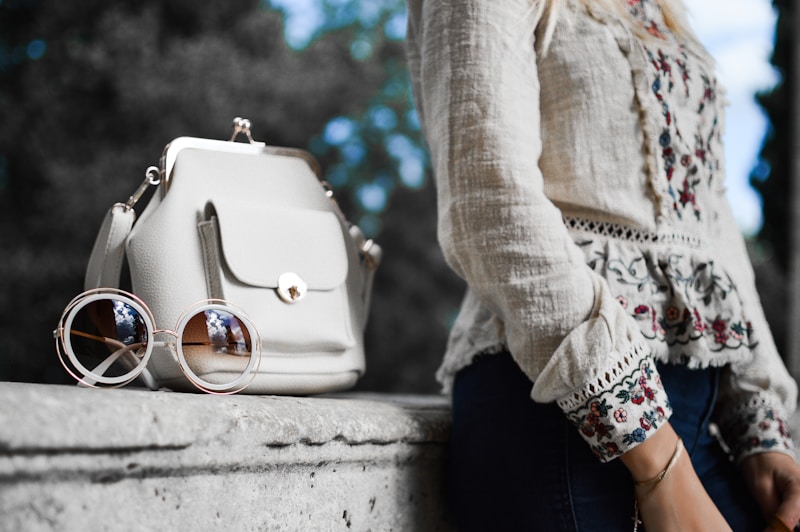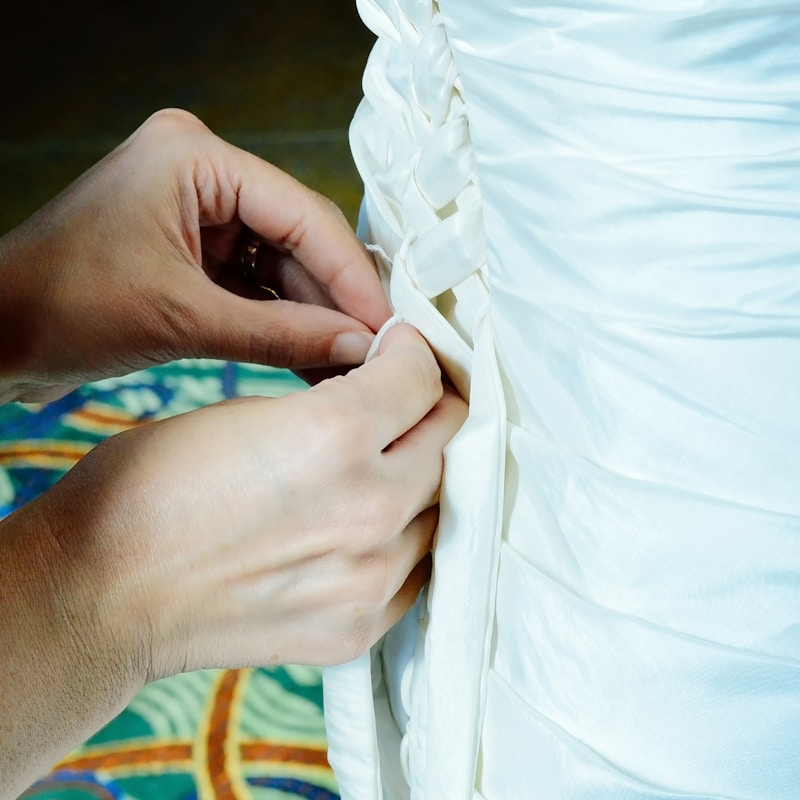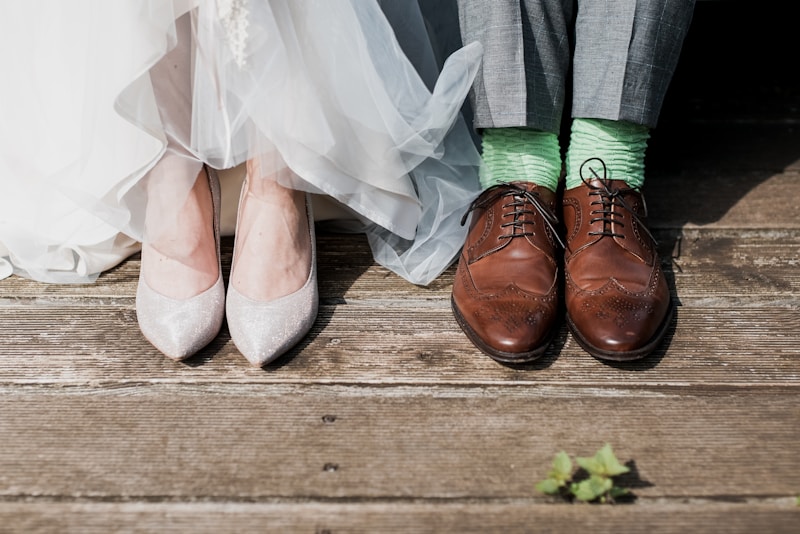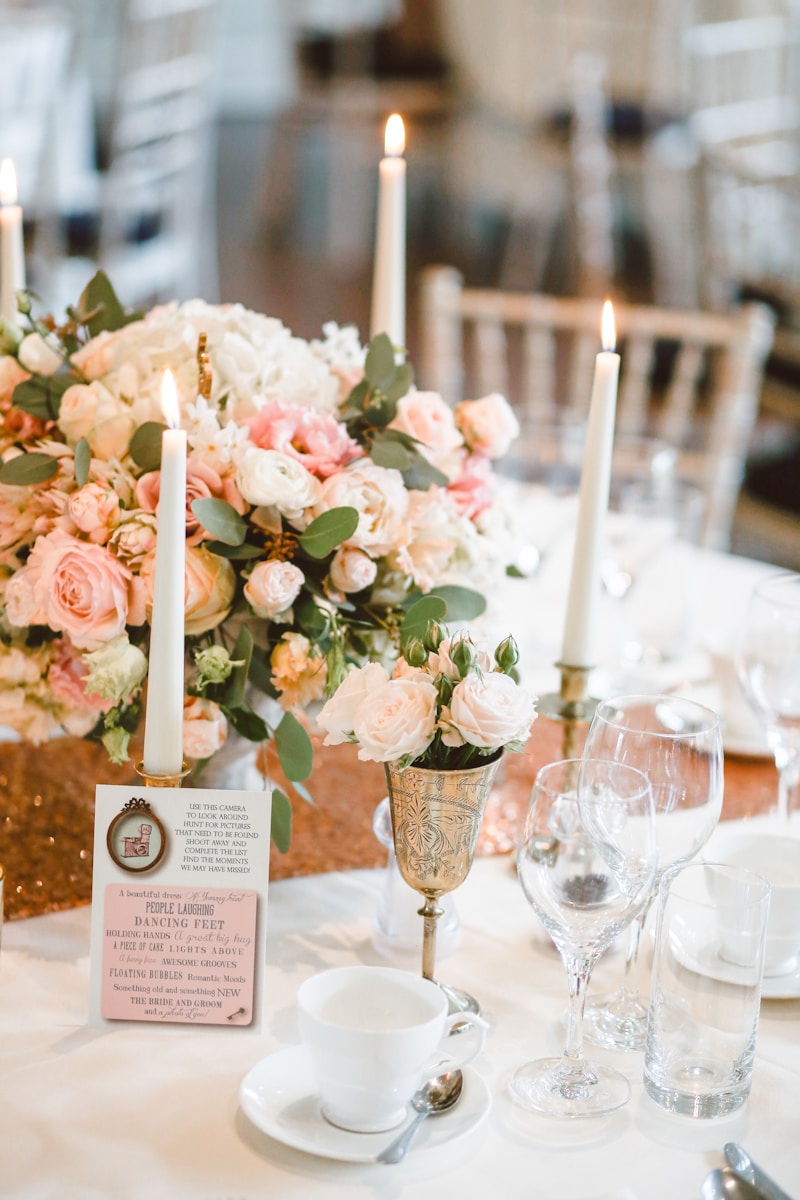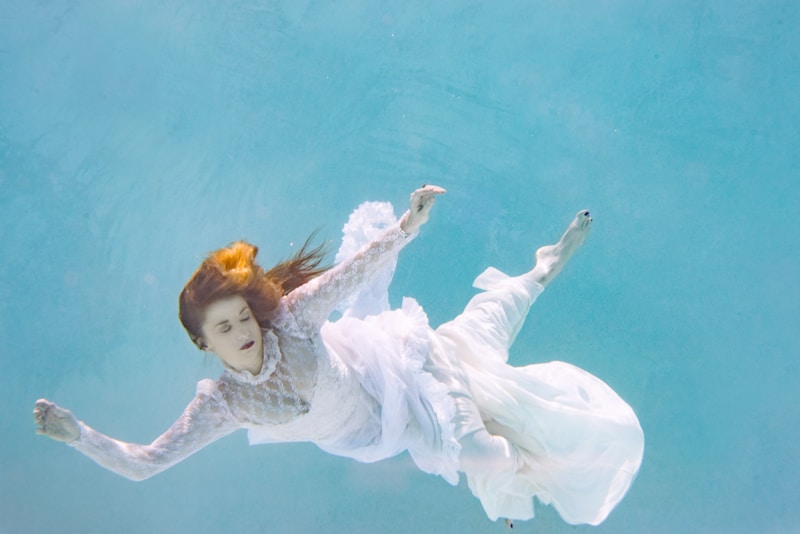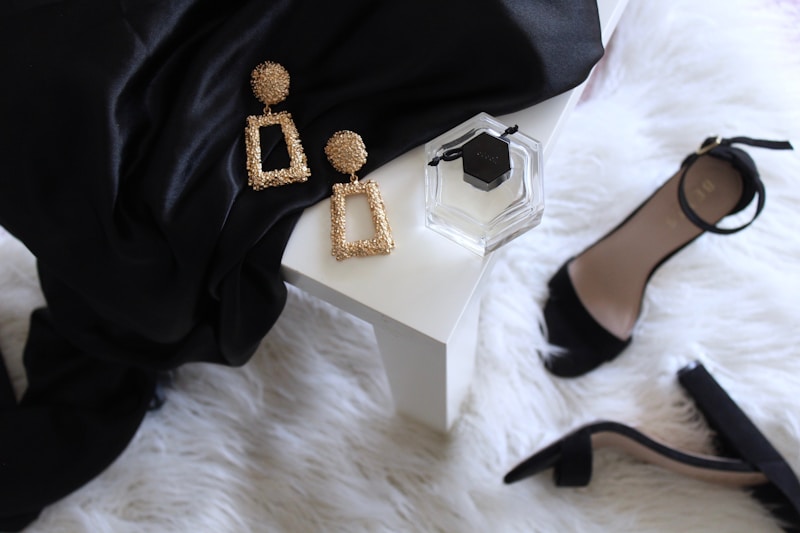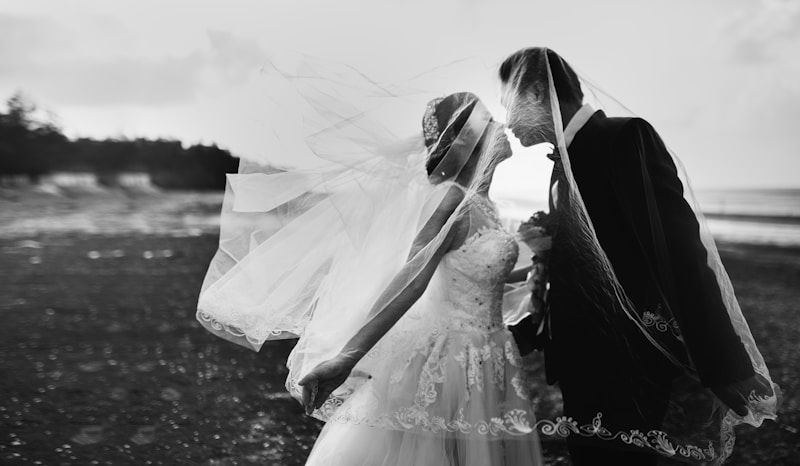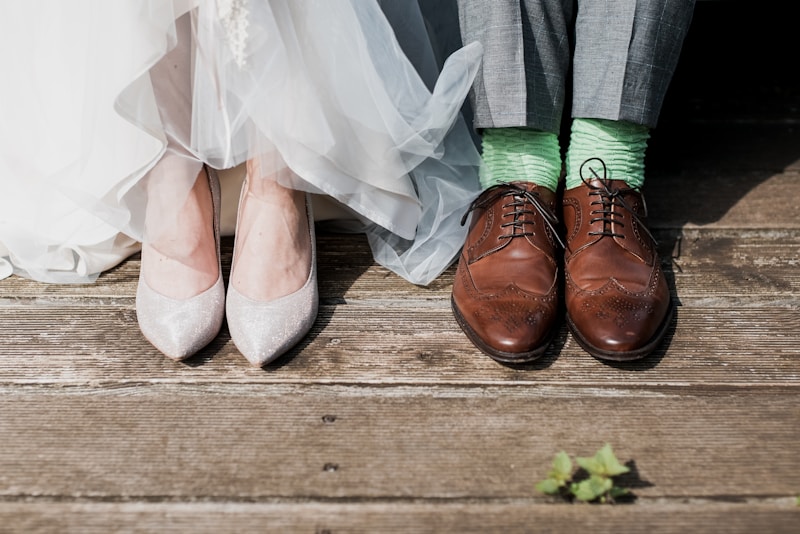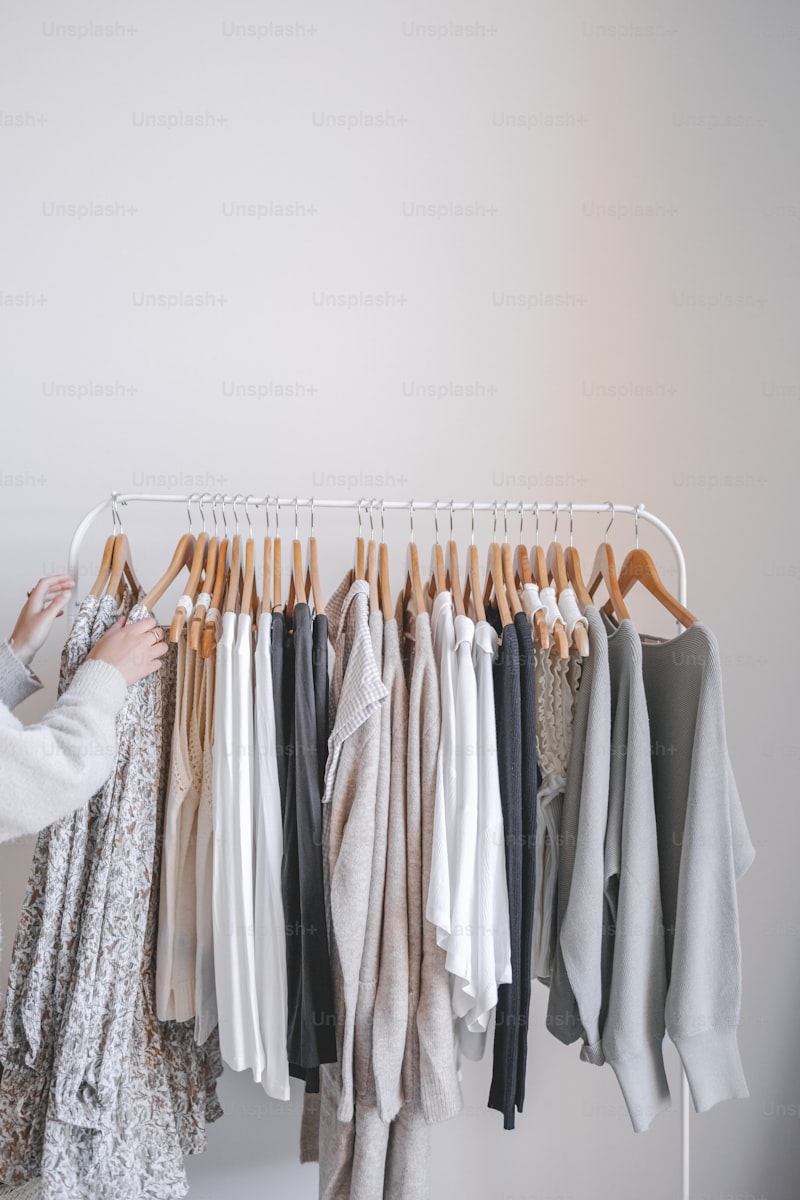Discover the Beauty of Size-Inclusive Wedding Gowns: A Comprehensive Guide
The Rise of Size-Inclusive Wedding GownsWeddings are a celebration of love, and every bride deserves to feel beautiful and confident on her special day. However, traditional bridal fashion has often overlooked the diverse body types of brides. Fortunately, the trend of size-inclusive wedding gowns is changing the landscape of bridal wear. This guide will take you through everything you need to know about size-inclusive wedding gowns, from styles and designers to tips for choosing the perfect dress.What Are Size-Inclusive Wedding Gowns?Size-inclusive wedding gowns refer to bridal dresses that cater to a wider range of body sizes and shapes, typically extending beyond the standard size range. While traditional bridal sizes often range from 0 to 12, size-inclusive collections can go up to size 30 and beyond. This inclusivity ensures that brides of all body types can find a dress that resonates with their personal style and fits beautifully.Why Size Inclusivity MattersIn an era that champions diversity and body positivity, size inclusivity in the bridal industry is essential for several reasons:Representation: Size-inclusive wedding gowns represent all brides, allowing everyone to see themselves in beautiful wedding attire.Confidence: Wearing a well-fitted gown can boost a bride’s confidence and enhance her overall experience.Variety: A more extensive range of sizes opens up a world of design possibilities for brides, making it easier to find a gown that reflects their unique ide...
Essential Wedding Accessories: Transforming Your Big Day
Planning a wedding is no small feat. Among the myriad of details involved, wedding accessories play a crucial role in not only complementing the overall aesthetic but also in adding a personal touch that reflects the couple's style. In this article, we will explore various wedding accessories, their significance, and how to choose the right ones for your celebration. What Are Wedding Accessories? Wedding accessories refer to the additional items that enhance the bridal look, groom's attire, and overall wedding decor. These can range from subtle pieces like hairpins to more prominent items such as floral arrangements. Their primary purpose is to complete the wedding look and create a cohesive theme. Bridal Accessories The bride's ensemble is incomplete without a selection of carefully chosen accessories. Here’s a closer look at vital bridal accessories: Accessory TypeDescriptionExamples VeilsA traditional piece that adds drama and elegance.Catedral, Blusher, Chapel JewelryEnhances the bride's outfit and adds sparkle.Necklaces, Earrings, Bracelets Hair AccessoriesComplements the hairstyle and adds flair.Combs, Pins, Flowers Belts/SashesAccentuates the waistline and adds a pop of color.Beaded belts, Satin sashes FootwearShould be stylish yet comfortable for the day.Heels, Flats, Custom Shoes Choosing the Right Bridal Accessories When selecting bridal accessories, consider the following tips: Match with Your Dress: Ensure that your accessories complement your...
Ultimate Guide to Stylish Wedding Outfits for Every Type of Ceremony
IntroductionWeddings are one of the most celebrated events in a person's life, where love is in the air, and dreams come true. One of the most important aspects of a wedding is, undoubtedly, the outfits worn by the bride, groom, and guests. Finding the perfect stylish wedding outfits can be challenging with so many choices and styles available today. This guide will delve deep into the world of fashionable wedding attire, catering to different settings, themes, and preferences.Understanding Wedding AttireWhen it comes to wedding outfits, various factors will influence your choice. These include:The wedding theme (e.g., bohemian, traditional, modern)The season and locationDress code (e.g., formal, semi-formal, casual)Personal style and comfortStylish Wedding Outfits for the BrideThe bride typically commands attention on the big day, making her outfit essential to the overall aesthetic. Here are some trendy options for brides:Classic White GownThe timeless white gown remains a popular choice for many brides. With styles ranging from A-line to ball gown, brides can choose what fits their body type and personal preference.Colored Wedding DressesMore brides are stepping away from traditional white, opting for pastel shades or vibrant colors. Colors like blush, champagne, and even bold red can make a stunning statement.Short and SassyFor the modern bride, a shorter dress can perfectly embody chic elegance. A knee-length or tea-length dress is ideal for a less formal wedding.Bohemia...
The Ultimate Guide to Colorful Bridal Gowns: Embrace Unconventional Elegance
When it comes to weddings, white has long been viewed as the traditional color for bridal gowns. However, modern brides are breaking from convention and opting for colorful bridal gowns that reflect their unique personalities and wedding themes. This article delves into the world of colorful bridal gowns, exploring trends, styles, and everything you need to know for your special day.1. The Rise of Colorful Bridal GownsColorful bridal gowns have become increasingly popular in recent years. Brides are no longer confined to traditional color palettes; instead, they seek to express individuality through their attire. Reasons behind this trend include: Personal Expression: Brides want their wedding attire to showcase their personal style, moving away from the cookie-cutter look. Influence of Celebrities: Many celebrities have worn vibrant colors on their wedding days, inspiring brides worldwide. Cultural Significance: In many cultures, color plays a significant role in bridal attire, symbolizing joy and celebration.2. Choosing the Right Color for Your Bridal GownChoosing a color for your bridal gown can be both exciting and daunting. Below are some popular choices along with their meanings:ColorMeaningRedSymbolizes love and passionBlueRepresents calmness and serenityPinkDenotes sweetness and romanceGreenSymbolizes fertility and new beginningsPurpleRepresents luxury and sophistication3. Popular Styles of Colorful Bridal GownsColorful bridal gowns come in a variety of style...
Mastering Wedding Dress Alterations: Your Complete Guide
Understanding Wedding Dress AlterationsWhen it comes to your big day, finding the perfect wedding dress is just the beginning. Wedding dress alterations play a crucial role in ensuring that your gown fits flawlessly and complements your unique shape. Not only do alterations enhance the overall look of the dress, but they also ensure comfort throughout the day. In this comprehensive guide, we will delve into everything you need to know about wedding dress alterations, from the types of alterations available to tips on finding the right tailor.Why Are Wedding Dress Alterations Important?Wedding dresses often require alterations due to several factors, such as personal size changes, specific style preferences, or the unique cut of the garment. Here are some reasons why alterations are vital: Fit and Comfort: A properly fitted dress allows you to move comfortably and confidently on your special day. Style Preferences: You may want to modify the neckline, sleeves, or even the length of your dress to better fit your personal style. Fabric Adjustments: Some fabrics naturally behave differently, and alterations can help them maintain their intended silhouette.Types of Wedding Dress AlterationsThere are several common types of alterations that brides typically opt for. Below is a concise summary of these alterations:Type of AlterationDescriptionHem AdjustmentAdjusting the length of the gown to the perfect height.Letting OutMaking the dress larger in certain areas, such as the waist...
Couture Bridal Fashion: The Ultimate Guide to Unforgettable Wedding Style
Discover the Allure of Couture Bridal FashionAs brides prepare for one of the most important days of their lives, the choice of wedding attire becomes a focal point of excitement and anticipation. Couture bridal fashion, with its exquisite craftsmanship and personalized designs, stands out as a captivating option. In this article, we'll delve into what couture bridal fashion is, why it's worth considering for your big day, and what to know before diving into this luxurious realm.What is Couture Bridal Fashion?Couture bridal fashion refers to custom-made wedding dresses crafted by renowned fashion designers or ateliers. Unlike ready-to-wear collections, couture gowns are tailored to fit an individual bride’s measurements and specifications. Each piece is made with meticulous attention to detail, often incorporating high-quality fabrics, unique embellishments, and innovative designs. This process not only results in stunning gowns but also creates a personal and intimate bridal experience.The Evolution of Couture Bridal FashionThe concept of couture began in the late 19th century, with designers like Charles Frederick Worth setting the stage for custom-made luxury garments. Over the decades, this art evolved, with iconic designers such as Dior, Chanel, and Vera Wang bringing their unique styles to bridal wear. Today, couture bridal fashion continues to thrive, influencing trends and individual tastes around the globe.Why Choose Couture Bridal Fashion?When it comes to wedding dr...
Discover the Magic of Whimsical Bridal Dresses: A Journey to Your Dream Wedding
IntroductionThe wedding day is often considered one of the most important days in a person’s life. It’s not just about saying “I do” but also about how one looks on that special day. Many brides are now leaning toward unique styles, and one trend that has captured the hearts of many is whimsical bridal dresses. But what exactly are these whimsical dresses, and how can they help you achieve the magical wedding look you desire? In this article, we’ll explore the enchanting world of whimsical bridal dresses, offering tips, style inspirations, and related queries for brides-to-be.What are Whimsical Bridal Dresses?Whimsical bridal dresses are characterized by their playful and imaginative designs that break away from traditional wedding gown styles. These dresses incorporate elements such as: Flowy Fabrics: Fabrics like tulle, lace, or chiffon that create an ethereal look. Unique Silhouettes: A-lines, ball gowns with unconventional cuts, and even tea-length designs. Intriguing Colors: Pastel shades, floral prints, or even bold colors that stand out. Fun Details: Ruffles, whimsical embroidery, or oversized bows that add character.Why Choose a Whimsical Bridal Dress?Choosing a whimsical bridal dress can make your wedding feel more personalized and reflective of your personality. Here are a few reasons why brides are opting for these delightful gowns: Individuality: A whimsical dress allows brides to showcase their unique style. Playfulness: It adds a fun and lighthearted feel ...
Unveiling the Ultimate Bridal Inspiration: Your Guide to a Dreamy Wedding
Bridal Inspiration: Transforming Your Dream Wedding into RealityIn the journey of planning the perfect wedding, finding the right bridal inspiration is crucial. It sets the tone for your big day, influences your decor choices, and even determines your bridal style. Whether you're a bride-to-be searching for the ultimate look or someone who enjoys the art of wedding planning, understanding the various facets of bridal inspiration can help turn your dream into a spectacular reality.Understanding Bridal InspirationBridal inspiration encompasses everything from wedding dresses and hairstyles to themes and color palettes. It’s about piecing together elements that resonate with you and your partner, creating a cohesive and beautiful wedding experience.Sources of Bridal InspirationWhen it comes to gathering bridal inspiration, the possibilities are endless. Here are some popular sources to consider: Wedding Magazines: These are a traditional yet valuable resource for discovering stunning wedding photography, style trends, and vendor recommendations. Social Media: Platforms like Pinterest and Instagram are incredibly effective for visual inspiration. You can create boards to save ideas that catch your eye. Wedding Fairs: Attending local wedding fairs can provide you with firsthand experience of decorations, dresses, and vendor options. Bridal Blogs: Many brides turn to blogs for unique ideas, DIY projects, and real wedding showcases that convey authentic experiences.Creat...
Mastering Wedding Dress Etiquette: A Comprehensive Guide for Every Bride
Understanding Wedding Dress EtiquetteWedding dress etiquette encompasses a myriad of traditions and cultural norms that dictate how to choose and wear a wedding dress. An elegant wedding gown is not just a piece of fabric; it represents a significant moment in a bride’s life. Adhering to wedding dress etiquette ensures that a bride feels confident, comfortable, and respected on her special day. Whether you are planning a lavish celebration or a more intimate gathering, understanding these guidelines can enhance the experience for all.The Significance of Wedding Dress EtiquetteWedding dress etiquette is essential for several reasons. Firstly, it allows the bride to honor her family traditions and cultural backgrounds. Secondly, it helps maintain decorum at the event, ensuring that guests understand the dress code. Lastly, it assists brides in navigating the often-daunting world of wedding fashion. Below, we provide a detailed breakdown of the elements of wedding dress etiquette.What to Consider When Choosing a Wedding DressFactorDescriptionStyleChoosing a style that reflects your personality while considering the theme of the wedding.FitEnsuring the dress fits well and is comfortable for all-day wear.VenueAligning the dress with the setting, such as beach, garden, or ballroom.TraditionsIncorporating cultural elements or family traditions into the dress choice.SeasonSelecting fabrics and styles appropriate for the time of year.Common Wedding Dress Etiquette QuestionsMany brides...
Essential Guide to Bride's Accessories: Elevate Your Wedding Look
Introduction to Bride's AccessoriesYour wedding day is one of the most pivotal moments of your life, and every detail counts, especially when it comes to your appearance. While the dress takes center stage, bride's accessories are equally important in completing the look. These elements not only enhance your overall appearance but also reflect your personality and style. In this article, we will explore various types of bride's accessories, tips on how to choose them, and why they play such a vital role in your wedding ensemble.The Importance of Bride's AccessoriesAccessorizing is key to creating a cohesive look for your wedding day. Accessories can transform your bridal gown from ordinary to extraordinary. They can add a touch of sparkle, bring cohesion to your look, or even serve as heirlooms that hold personal significance. Here, we'll take a closer look at the different types of accessories that brides can consider.Main Types of Bridal AccessoriesType of AccessoryDescriptionJewelryIncludes earrings, necklaces, bracelets, and rings that complement the wedding dress.HeadpiecesIncludes veils, tiaras, hair pins, and floral crowns that add elegance and charm.FootwearWedding shoes that should be stylish yet comfortable, fitting the theme of the wedding.Belts and SashesEmphasizes the waist and adds definition to the bridal gown.Clutches and BagsAccessories to hold essentials while enhancing the overall outfit.Jewelry: A Must-Have for Every BrideJewelry is one of the most promine...
Discover the Best Budget-Friendly Wedding Gowns for Your Dream Day
Finding the Perfect Budget-Friendly Wedding GownYour wedding day is one of the most memorable days of your life, and finding the ideal wedding gown is a critical part of that experience. For many brides, the challenge lies in striking a balance between stunning design and budget constraints. Fortunately, there are countless options for budget-friendly wedding gowns that don't sacrifice quality or style. In this article, we will explore various avenues to find the perfect gown, covering everything from where to shop and what styles to consider, to specific budget-friendly tips.Why Choose a Budget-Friendly Wedding Gown?Weddings can be incredibly expensive, with the average cost of a wedding in the United States hovering around $34,000. The wedding gown alone can take up a significant portion of this budget. However, a gorgeous dress doesn’t have to come with a hefty price tag. Here are a few reasons why opting for a budget-friendly wedding gown makes sense:Savings on Overall Budget: Choosing an affordable gown frees up funds for other essential aspects of your wedding, such as catering or the reception venue.Variety of Options: There are numerous retailers and designers who specialize in budget wedding dresses, giving you a plethora of choices.More Money for Memories: With a lower gown cost, you can allocate more of your budget toward creating unforgettable memories, like a fabulous honeymoon.Where to Find Budget-Friendly Wedding GownsNow that we understand the benefits, let’s ...
Unveiling the Allure of High Fashion Wedding Dresses: A Comprehensive Guide
High Fashion Wedding Dresses: Beyond the OrdinaryWedding dresses are not just garments; they represent a dream, a vision, and a promise of a beautiful journey ahead. Among the myriad options available, high fashion wedding dresses stand out for their exquisite design, craftsmanship, and luxury fabrics. In this article, we will explore the world of high fashion wedding dresses, offering insights into trends, designers, and tips for choosing the perfect gown for your special day.The Definition of High Fashion Wedding DressesHigh fashion wedding dresses are characterized by their exclusive designs, often seen on runways and in prestigious fashion houses. These dresses are typically crafted with the finest materials, intricate details, and a keen eye for innovation. They serve to satisfy brides looking for something exceptionally unique that reflects their personal style while making a bold statement.What Makes High Fashion Wedding Dresses Different?High fashion wedding dresses differ from traditional wedding gowns in several ways:FeatureHigh Fashion Wedding DressesTraditional Wedding DressesDesignAvant-garde, unique, often coutureClassic, typically conservative stylesMaterialLuxury fabrics (silk, lace, tulle)Various fabrics, less luxurious optionsAvailabilityLimited edition, exclusive collectionsWidely availablePrice RangeHigh-end, can range from $5,000 to $100,000+$500 to $3,000+Trending Styles in High Fashion Wedding DressesAs each season brings forth new collections, certain ...
Discover the Enchantment of Romantic Wedding Gowns for Your Dream Day
Embrace Romance with Exquisite Wedding GownsYour wedding day is a celebration of love, and every detail should reflect the romance of the occasion. One of the most significant elements is the wedding gown. Choosing the perfect romantic wedding gown can transform your look and enhance the overall atmosphere of your wedding. This article explores the essence of romantic wedding gowns, providing you with inspiration, styles, and expert tips to help you find the dress of your dreams.The Essence of Romantic Wedding GownsRomantic wedding gowns often feature flowing fabrics, delicate lace, and intricate detailing. They evoke a sense of whimsy, nostalgia, and elegance, making them ideal for dreamy weddings. Whether you are planning a formal event or an intimate gathering, romantic gowns cater to various styles, allowing brides to express their individuality.Top Characteristics of Romantic Wedding GownsFeatureDescriptionFabricSoft, flowing materials like tulle, chiffon, and silk create a dreamy silhouette.LaceDelicate lace adds texture and a vintage flair, enhancing the romantic vibe.ColorTraditional whites and ivories, as well as blush and pastel shades, are popular choices.SilhouetteA-line, ball gown, and sheath styles are often favored for their feminine shapes.EmbellishmentsBeading, floral appliques, and embroidery create detailed and personalized touches.Popular Styles of Romantic Wedding GownsWhen considering a romantic wedding gown, various styles capture the essence of love an...
Enchanting Fairytale Wedding Gowns: The Perfect Dress for Your Dream Wedding
Discovering the Magic of Fairytale Wedding GownsWhen it comes to planning a wedding, one of the most critical decisions a bride makes is selecting the perfect gown. Among the myriad of styles available, fairytale wedding gowns have captured the hearts of many brides-to-be. Imagine stepping into your dream venue, gliding down the aisle in a gown that feels like it was conjured from the pages of a storybook. This article delves into the enchanting world of fairytale wedding gowns, exploring styles, tips for selection, and where to find the most exquisite options.The Allure of Fairytale Wedding GownsFairytale wedding gowns are designed to evoke feelings of wonder and romance. They often feature exquisite detailing, flowing fabrics, and silhouette-enhancing designs, making them perfect for brides seeking to embody a princess-like aura on their special day. But what defines a fairytale wedding gown? Below are some key characteristics: Flowing Silhouettes: A-line and ball gown silhouettes are common in fairytale gowns, offering a dramatic and romantic effect. Luxurious Fabrics: Materials like silk, tulle, and lace create an ethereal feel that enhances the gown's overall elegance. Intricate Embellishments: Many fairytale gowns are adorned with beading, embroidery, or appliqués that add a touch of magic.Types of Fairytale Wedding GownsFrom the classic to the contemporary, fairytale wedding gowns encompass a broad spectrum of styles. Here are some popular types that have become fav...
Unveiling the Elegance: Fashion Forward Wedding Dresses for the Modern Bride
Introduction to Fashion Forward Wedding DressesIn the ever-evolving world of bridal fashion, the term fashion forward wedding dresses has become synonymous with innovation, style, and individuality. As weddings become more personalized, brides are seeking unique designs that not only express their personality but also reflect contemporary trends. This article delves into the latest trends in fashion forward wedding dresses, exploring styles, fabrics, colors, and tips to help brides find the perfect gown for their special day.The Evolution of Wedding DressesTraditionally, wedding dresses were characterized by their classic silhouettes and white hues. However, modern brides are embracing diversity in styles that align with the fashion forward concept. From bohemian chic to tailored sophistication, the choices are abundant. The evolution of wedding dresses showcases a departure from convention to embrace uniqueness and self-expression.Current Trends in Fashion Forward Wedding DressesTrendDescriptionMix and Match PiecesBrides are opting for separates, allowing customization and versatility.Bold ColorsNon-traditional hues, such as blush pink, sage green, and even black, are in vogue.Sustainable FabricsEco-friendly materials are being used to create stylish yet sustainable wedding gowns.Statement SleevesPuffy sleeves or tailored cuffs add drama and elegance to wedding dresses.Minimalist DesignsSimple silhouettes focus on cut and fit, appealing to modern sensibilities.Popular Styles...
The Ultimate Guide to Feminine Wedding Attire: Styles, Tips, and Trends
As the wedding season approaches, brides-to-be and their bridal parties often find themselves on the quest for the perfect look. When it comes to feminine wedding attire, there are countless options to explore, from traditional gowns to modern chic outfits. This guide not only delves into the different styles of feminine wedding attire but also offers valuable tips for choosing the ideal ensemble for your special day.Understanding Feminine Wedding AttireFeminine wedding attire encompasses a wide range of clothing options designed to highlight the essence of femininity while adhering to the elegance associated with wedding celebrations. This category can include:Wedding Dresses: Traditional white gowns, colorful options, or even short dresses.Bridesmaid Dresses: Coordinated outfits for the bridal party that complement the bride's attire.Accessories: From veils and tiaras to elegant jewelry.Popular Styles of Feminine Wedding AttireThere are various styles you might consider when searching for the ideal feminine wedding attire. Here’s a breakdown:StyleDescriptionBest ForA-Line DressFlattering shape that is fitted at the hips and flares out towards the hem.All body typesBohemian GownRelaxed fit with lace, floral accents, and flowing layers.Outdoor and casual weddingsMermaid DressTight-fitting until the knee, then flares out, accentuating curves.Hourglass figuresShort Wedding DressesIdeal for a fun, casual vibe; these dresses can be knee-length or above.Informal celebrationsTwo-Pi...
The Ultimate Guide to Luxury Bridal Collections: Elevate Your Wedding Experience
Introduction to Luxury Bridal CollectionsWhen it comes to planning a wedding, every detail matters, particularly the bridal gown. In recent years, luxury bridal collections have emerged as a popular choice among brides looking to make a statement on their special day. These collections offer unique designs, high-quality fabrics, and exquisite craftsmanship that set them apart from standard options. In this guide, we will explore the world of luxury bridal collections, their components, and what to consider when choosing the perfect gown.What Are Luxury Bridal Collections?Luxury bridal collections are curated sets of wedding gowns and accessories designed by renowned designers or brands. These collections often feature: Exclusive designs unavailable in regular stores High-quality materials such as silk, satin, and lace Exceptional detailing, including hand-beading and embroidery Customizable options to fit the specific desires of the brideLuxury bridal collections are typically showcased during fashion weeks and are available through select bridal boutiques that offer personalized shopping experiences.Key Features of Luxury Bridal CollectionsFeatureDescriptionExclusive DesignsEach gown is crafted with unique elements that cater to the bride's tastes.Premium FabricsFabrics used in luxury collections are often from Italy or France, ensuring elegance and comfort.Attention to DetailEach dress is hand-finished, with every bead and stitch placed thoughtfully.Customizable...
Embrace Elegance: The Ultimate Guide to Minimalist Wedding Attire
Introduction to Minimalist Wedding AttireIn the world of weddings, attire plays a pivotal role in creating the perfect ambiance. Minimalist wedding attire has rapidly gained popularity for its elegance and timeless appeal. This style resonates with couples looking for simplicity without sacrificing sophistication. In this article, we will explore the essence of minimalist wedding attire, essential tips for choosing the right pieces, and how to style them for your special day.What is Minimalist Wedding Attire?Minimalist wedding attire emphasizes clean lines, understated designs, and a focus on quality materials rather than elaborate embellishments. The ethos of minimalism is rooted in the idea that less is more, allowing the wearer's natural beauty to shine through. This approach not only creates a serene atmosphere but also ensures that the focus remains on the couple and their vows.Benefits of Choosing Minimalist Wedding Attire Timelessness: Minimalist styles are not subject to the fluctuations of fashion trends, making them eternally relevant. Versatility: Minimalist pieces can be reused for other occasions, providing great value for your investment. Comfort: Often, minimalist designs prioritize comfort over extravagance, allowing you to enjoy your day with ease.Key Elements of Minimalist Wedding AttireWhen selecting minimalist wedding attire, consider the following key elements: Fabric Quality Opt for high-quality fabrics like silk, cotton, or li...
Timeless Wedding Styles: Creating Everlasting Memories
When it comes to planning a wedding, choosing a theme or style that resonates with both partners can be a daunting task. The quest for the perfect aesthetic often leads couples down the rabbit hole of trends that may not stand the test of time. However, embracing timeless wedding styles can create a memorable experience that remains etched in the hearts of everyone who attends. In this article, we will explore various timeless wedding styles, their characteristics, and how to incorporate them into your special day. Whether you’re planning a rustic country wedding or an elegant black-tie affair, there’s a timeless style that suits every couple’s vision. The Essence of Timeless Wedding Styles Timeless wedding styles are characterized by their ability to transcend trends, allowing couples to reflect their unique personalities while creating a lasting impression. These styles often emphasize classic elements that are both elegant and sophisticated. Here are a few key characteristics: Classic Colors: Neutral palettes, such as whites, creams, soft pinks, and muted blues, are staples of timeless weddings. Elegant Decor: Think floral arrangements, candlelight, and high-quality materials that exude luxury. Cultural Traditions: Incorporating family traditions and cultural elements can create a meaningful backdrop that honors your history. Enduring Venue Choices: Classic venues such as churches, gardens, and historic estates offer a sense of permanence and beauty. Popular T...
Exploring Classic Dress Silhouettes: Timeless Styles for Every Occasion
When it comes to fashion, some trends fade while others endure. Among these timeless elements are classic dress silhouettes that have captivated generations. From elegant A-line gowns to form-fitting sheath dresses, understanding these styles can elevate your wardrobe and boost your confidence. In this article, we will delve deep into classic dress silhouettes, exploring their history, characteristics, and the occasions they suit best.The Importance of Classic Dress SilhouettesClassic dress silhouettes transcend fleeting fashion trends. They embody a sense of timeless elegance that appeals to various demographics, making them a staple in numerous wardrobes. Learning about these silhouettes can assist fashion enthusiasts in making more informed choices while shopping or designing their clothing lines.Popular Classic Dress Silhouettes and Their FeaturesSilhouetteCharacteristicsBest ForA-LineFitted at the hips and gradually flares out towards the hem.All body types; perfect for casual and formal wear.SheathForm-fitting silhouette that emphasizes curves without extra volume.Hourglass and rectangular body types; ideal for professional and evening events.Ball GownFeatures a fitted bodice and a very full skirt.Formal occasions such as balls and weddings; suitable for hourglass figures.Empire WaistHigh waistline situated just under the bust, flowing into a skirt.Pregnant women or those looking to disguise the midsection; versatile for different occasions.MermaidFitted silhouette that...
